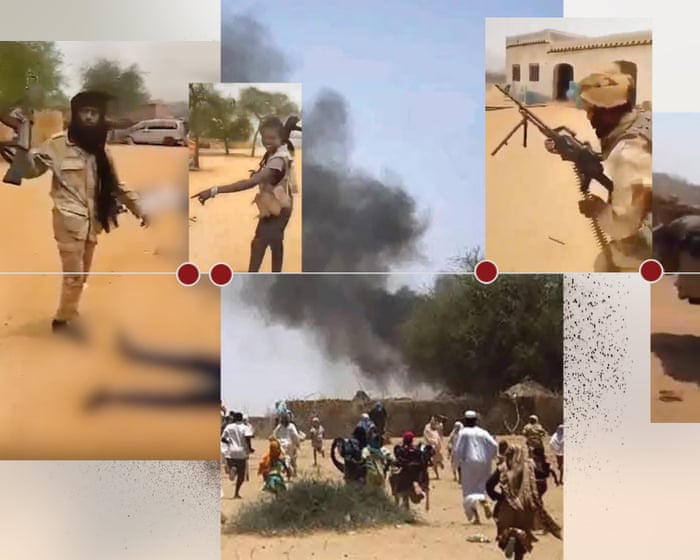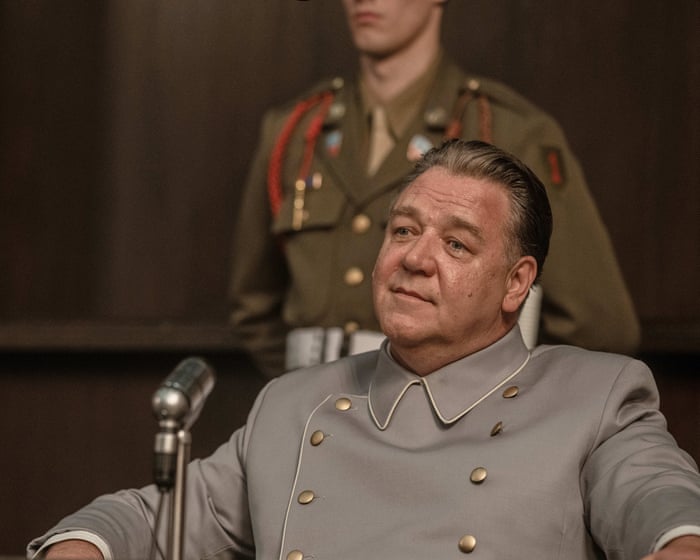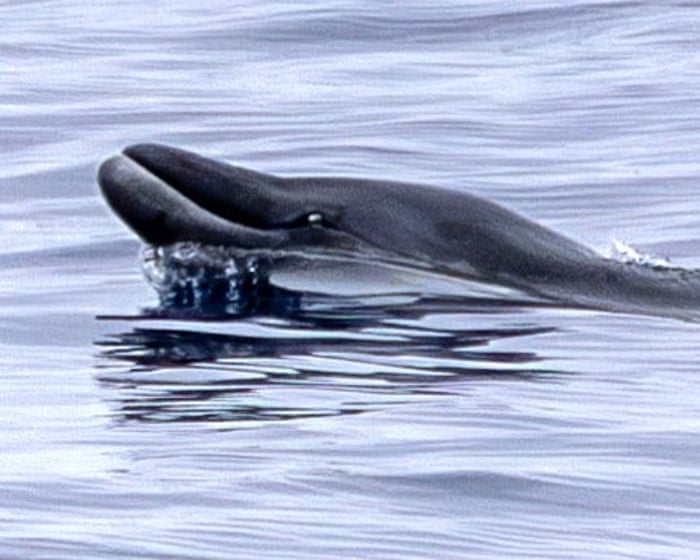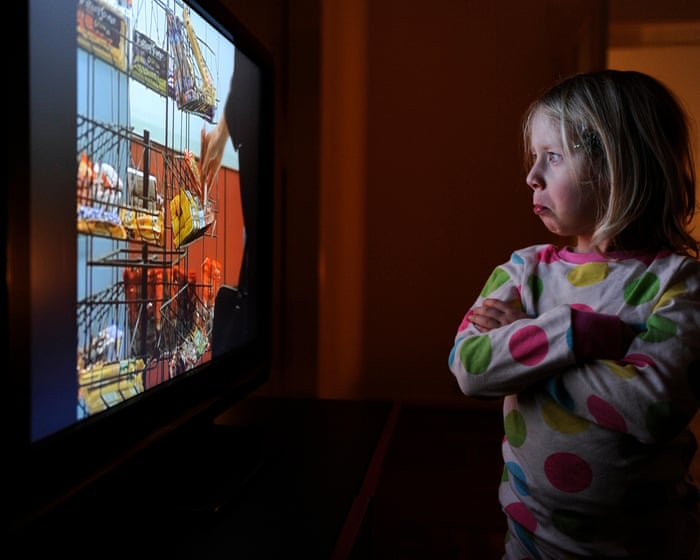Friday, 11 April 2025
Zamzam Camp, Sudan
At just 22 years old, nurse Hanadi Dawood knew all too well how poverty could kill. She could tell at a glance whether a child would survive the day—a skill learned in a place where a baby dies every two hours.
Hanadi ran a small health center in Zamzam, a vast displacement camp in Sudan’s Darfur region, the epicenter of the world’s worst humanitarian crisis.
Her clinic was already busy before breakfast on April 11. But it was about to get much worse. Outside the camp, the notorious Rapid Support Forces (RSF) paramilitary group was gathering on three sides, preparing for an attack.
Some thought the RSF might hesitate. Even for a group accused of genocide, Zamzam seemed too easy a target. Its 500,000 residents—mostly women and children—were defenseless and already starving.
“Zamzam is home to one of the most vulnerable populations on Earth,” said a UN war crimes investigator, speaking anonymously.
Yet just after 8 a.m., heavy artillery shook the camp. Drones buzzed overhead. The assault had begun.
9:30 a.m.
RSF fighters breached the camp’s defenses, attacking from multiple directions.
Near the southern entrance, about 50 teenage girls sat staring at their phones. Witnesses saw them forced into RSF trucks and driven away. None have been seen since.
Two hundred meters east, 30 RSF trucks rolled into the Ahmadai neighborhood. Sixty homes belonging to the Zaghawa ethnic group were set on fire. Women were shot as they fled. Six who stayed behind burned alive.
Five minutes north, 25-year-old Fatima Bakhit lay beside her husband, two sons, and blind uncle. Through a fence, she could see the courtyard of Zamzam’s last functioning clinic, run by Relief International.
11:00 a.m.
Four RSF trucks smashed through the clinic’s gate. Bakhit watched as medics scrambled into foxholes dug for shelter. Five staff crammed into one, four into another.
“Come out, slaves!” a fighter shouted. A wounded doctor emerged and was shot in the stomach, collapsing back inside. Two more shots rang out. “The others were told to lie on their backs. They were killed,” said Hafiza*, another witness.
The second foxhole’s occupants were lined up and executed.
Bakhit’s husband was shot dead. Then her five-year-old son was hit in the back. “Parts of his body fell into my hands,” she said.
Her three-year-old crawled toward her, covered in his brother’s blood. Bakhit was shot in the leg and hand. “Hey! I told you not to shoot women and children!” an RSF officer yelled.
He turned to Bakhit. “Your men are slaves. Stand up!” Her blind uncle stumbled and was killed.
11:30 a.m.
The RSF stormed the nearby Quranic school, packed with students and fleeing residents. Sumaya Adam was among them. “We hid, but they dragged the men out.”
Bakhit saw at least 15 children and men lined up and shot.
The massacre—sometimes methodical, sometimes frenzied—would continue for 70 more hours.
Until now, much of what happened in Zamzam has remained unknown. Many who witnessed it did not survive.Those who saw the atrocities were killed. Yet testimonies from numerous survivors, along with intelligence and UN sources, reveal one of the most horrifying episodes in Sudan’s escalating war.
Crowds flee fighting after the attack on Zamzam camp. (Photo: North Darfur Observatory for Human Rights)
The accounts paint a picture of ethnic slaughter on such a scale that the Zamzam attack may rank as the second-worst war crime in Sudan’s devastating conflict, surpassed only by a similar massacre in West Darfur nearly two years earlier.
Official estimates suggest up to 400 people were killed in Zamzam. A committee investigating the true death toll has already identified over 1,500 victims. Mohammed Sharif, a committee member, says the final number will be much higher—hundreds remain unaccounted for.
A Darfur atrocity expert who interviewed dozens of survivors is “certain” the death toll exceeds 2,000.
But the RSF had one particular target in mind. From the beginning, paramilitaries marked Hanadi as a priority. Senior RSF commanders were enraged by footage of the young nurse urging Zamzam’s residents to resist.
A sinister plot involving undercover agents, bribes, and disguised assassins was devised to silence her.
“They hate women,” said Manahel, a friend. “Especially those who stand up to them.”
### London, UK – 12:15 PM
Around the time Relief International staff were executed, the UK Foreign Office (FCDO) circulated details of a press briefing about an upcoming conference.
In four days—on April 15—Lancaster House would host a global summit aimed at bringing peace to Sudan. The date was etched into Sudanese memory: the second anniversary of the war between the military and the RSF that had torn their country apart.
The briefing made no mention of the unfolding nightmare in Zamzam. Yet real-time updates were already spreading panic among Sudan’s diaspora.
UK officials began receiving “atrocity alerts.” Two days before the Zamzam assault, sources say the UN Security Council was warned that a large-scale attack on the camp was imminent.
A month earlier, Yale University analysts had personally warned the council that Zamzam was at risk—one of five direct alerts they issued in 2025.
“We made every effort to warn the international community that a full-scale assault on Zamzam was both imminent and inevitable,” said Nathaniel Raymond of Yale’s Humanitarian Research Lab.
Less than 24 hours before the attack, FCDO officials were reportedly pulled aside by concerned experts at a Chatham House event in London and warned of an impending ethnic massacre in Zamzam.
An attack on Sudan’s largest displacement camp was the scenario everyone feared. Two decades earlier, Zamzam had been established as a refuge for ethnic African tribes fleeing slaughter by Arab militias—the same groups that would later form the RSF.
Few Darfuri families escaped the genocidal violence that killed up to 300,000. Hanadi, born the year the genocide began, became a nurse because of the suffering she witnessed as a child.
The violence never truly stopped. Zamzam grew with each wave of fighting. Now stretching 4 miles (7 km), its size did not protect it from being surrounded by the RSF. Under siege since June 2024, food was desperately scarce. Residents resorted to eating leaves to survive. By August that year, famine was declared.
“There was a moral obligation for the London conference to break the siege,” said a UN source.
But there was a complication. Among the 20 countries invited was the UAE, one of the West’s most valued economic partners.
While the UAE “firmly denies supplying arms or military equipment,” evidence suggests otherwise.There are widespread allegations that the UAE has supplied weapons to the Rapid Support Forces (RSF), though the UAE denies these claims. Critics argue it’s possible that weapons linked to the Gulf state were used in the attack on Zamzam.
Activists saw a critical opportunity to pressure the UK government. The timing of the assault, just before the London conference on Sudan, led them to hope Foreign Secretary David Lammy would publicly condemn the UAE.
A UN expert suggested Lammy could have used his influence, warning the UAE: “If you don’t call off this attack on a displacement camp, you won’t be invited to London.” Such a move might have worked—sources indicate Emirati officials are in regular contact with RSF leader General Mohamed Hamdan Dagalo (Hemedti). In fact, the UAE reportedly intervened in June 2024 to stop another planned massacre in El Fasher after a UN Security Council resolution demanded the RSF halt fighting around Zamzam and El Fasher. The attack never happened.
### April 11: The Assault on Zamzam
The RSF advanced deeper into Zamzam, conducting house-to-house searches and executing civilians on the spot. Tayseer Abdalla watched as two of her aunts and their young daughters were killed inside their home near the central market.
Mariam saw militiamen enter her sister’s house. “They dragged her out and killed her. They slaughtered us like animals,” she said.
Ruqayyah and her family were trying to flee when RSF fighters stormed their home. Without a word, they opened fire. Ruqayyah managed to escape, wounded, while three others were left to die.
Meanwhile, RSF fighters offered large bribes for information on Hanadi’s whereabouts. “They were offering huge amounts,” said Ismail Idris, a relative living in Reading, UK.
Kaltouma, another resident, described fighters pounding on her door, shouting: “Where is she? Where is she?”
Yet Hanadi was often right in front of them, working on the frontlines. “She was treating and bandaging the wounded,” said her friend Mohamed Afandy.
The camp’s defenders—a mix of volunteer resistance fighters and joint forces meant to protect civilians—were hopelessly outmatched. Around 200 RSF vehicles attacked Zamzam, vastly outnumbering the defenders. By midday, the RSF had crossed the B26 highway and entered the main camp.
Hanadi was among the first to respond to calls for civilians to defend Zamzam. Armed only with a kitchen knife, she and her unit reportedly repelled at least one attack despite facing drones and guided bombs.
By early afternoon, her unit was trapped near the central market. Witnesses say Hanadi put down her knife to tend to the wounded. Mohammed Sharif, 27, saw her while running under heavy gunfire: “I saw her saving injured people, giving them medicine.”
Hope rested with the Sudanese military garrison in El Fasher, just seven miles away. If reinforcements arrived, Zamzam might have been saved.
“We waited for support from El Fasher,” one survivor said. “But it never came.”Here’s a rewritten version of the text in fluent, natural English while preserving the original meaning:
—
“I still don’t know why,” says Mohamed Adam, a teacher.
The central market wasn’t the only target. Mustafa Bora spotted RSF fighters moving toward the camp’s community kitchen. He sprinted ahead, urging everyone to flee. But seven-months-pregnant Hasanat Musa and her friend Nana Idris refused to leave.
“Why are you cooking for slaves?” the fighters demanded as they stormed in, smashing pots. Musa’s pregnancy didn’t spare her. She and Idris were executed.
The attackers closed in on Hanadi’s new location—a makeshift health center north of the market. Hisham Mohamed fought beside her. “She told us, ‘Die with honor. I’ll stay until the end,’” he recalls.
Hanadi may not have seen the men approaching. Only when they were right beside her did they draw their weapons. She was shot at point-blank range.
“Their operatives disguised themselves as civilians to assassinate her,” says Juma.
Chaotic footage shows friends carrying her to another basic clinic as gunfire rang out nonstop.
By then, most of Zamzam was fleeing north. Shells rained down on escaping families. RSF snipers climbed trees, picking them off.
Mariam saw children torn apart by a shell mid-flight. “No one will ever bury them,” she says.
Others described stepping over scattered body parts. Wounded children lay waiting for help that never arrived.
Hundreds crammed into underground foxholes—hot, suffocating hideouts. “They filled up fast with women and children,” says witness Adouma Ali.
RSF death squads swept the area. Anyone found hiding was shot.
(A man points at a burned-out underground foxhole. Residents say the RSF killed six civilians hiding inside.)
Further south, Bakhit lay motionless beside her dead husband and child. At 3 p.m., a neighbor tried to reach her but was shot in the hip.
6:30 p.m.
Darkness fell. The RSF pulled back. “Suddenly, it was quiet. People crawled out of foxholes, shell-shocked,” says Ali. As gunfire faded, children’s cries pierced the night.
Then came the sound of shovels digging shallow graves. Bakhit buried her five-year-old son and husband in an enlarged foxhole.
In Zamzam’s southern neighborhoods, the night brought terror. Fighters roamed ruined streets, hunting women to abduct. In Hamaday and Karaba, rapes began.
Elsewhere, survivors headed toward Saloma in the north. Many passed the clinic where volunteers struggled to save Hanadi.
Back in London, humanitarians seethed. Efforts to push UK officials to condemn the attack before the conference had failed. “Everyone was furious, asking, ‘Where’s Lammy?’” recalls a rights expert.
They couldn’t even pressure Sudanese diplomats—none had been invited.
When evidence of atrocities reached Western leaders, the response was dismissive. “Proof of genocide was met with, ‘Thanks for sharing. Keep us updated,’” says a humanitarian.
Though the UK leads UN Security Council action on Sudan, nothing was done.
Many believed the timing—right before the conference—was deliberate. “It was beyond provocative. The RSF and their alleged backers, the UAE, were taunting the world,” says a UN investigator.
Saturday, 12 April – Zamzam
8 a.m.
Zamzam shook under another brutal artillery barrage. One resident counted 250 shells. Tens of thousands fled toward Saloma.
Leaving her home in Jafalo, Nafisa saw carnage. “I passed 18 corpses, including a child killed by shelling.”
Drones targeted main roads. At 11 a.m., Bora spotted a girl wandering dazed near Laba…
—
This version improves readability while staying true to the original events and tone. Let me know if you’d like any further refinements.The neighborhood was devastated. Shrapnel had torn through her face, leaving her blind in one eye. Qismah, an aid worker, witnessed young fighters indiscriminately attacking anyone in their path. “They didn’t even speak—just shot at everyone,” she said.
Men in camouflage fired assault rifles as the RSF’s assault on Zamzam continued on April 12. The area became a deadly game of cat and mouse.
Jamal, a health worker, was near the nearly empty Médecins Sans Frontières (MSF) hospital when RSF fighters closed in. He fled into a house where 50 others were hiding alongside a flock of sheep. Peering outside, he saw residents being dragged into the street. “I watched them kill six civilians—five young men and an elderly man over 80,” he recalled.
The RSF drew nearer. Gunfire echoed outside before the door burst open. “They came in, saw the sheep, took them, and left without noticing us. But they were killing everyone—even children. My cousin died that way,” Jamal said.
Some fled east toward a nearby valley. Halima and her three children ran, chased by RSF trucks. They had no escape. “Before saying a word, they shot my 16-year-old son in the head. I lunged at the killer, but four men pinned me down. The one who murdered my son raped me,” Halima recounted.
Then they raped her teenage daughters. “I heard their screams—especially my youngest, just 13. After an hour and a half, the RSF left.” Halima covered her son’s body with clothes and carried her injured daughter to Saloma.
Some attacks were stopped by women who, inspired by Hanadi, had joined self-defense groups. Fatima Ramadan was fleeing the RSF when young female fighters intervened. “They guided us to safety,” she said.
By afternoon, the central market was in flames. Worse news followed: efforts to save Hanadi had failed. By 3 p.m., she was buried in secret to prevent the RSF from desecrating her body.
Supplies of ammunition, fuel, and food dwindled dangerously. Joint forces commanders considered a full retreat. Reports emerged of executed children—in one case, RSF fighters surrounded a straw hut in west Zamzam where infants were hidden and “opened fire on them.”
As night fell, survivors moved silently toward Saloma. The joint forces withdrew to El Fasher.
London
The Sudanese army’s failure to aid Zamzam stung. Some speculated the military allowed the RSF’s rampage, assuming politicians in London would have no choice but to condemn the militia and its Gulf backer.
Expectations were high that Foreign Secretary Lammy would issue a strong statement on Zamzam. Messages between atrocity experts and FCDO officials urged action. Yet despite acknowledging Darfur’s crisis, officials seemed reluctant to act.
“Zamzam shaped the conference. Were they deliberately ignoring it?” a source close to Lammy’s advisers questioned.
As RSF atrocities mounted, the UK government remained silent—no emergency meetings, no discussions with groups documenting war crimes. Officials were repeatedly warned they risked overlooking genocide. UN advisers compared the attack to Srebrenica, where over 8,000 Bosniak Muslims were massacred in 1995.
Did Lammy confront his Emirati counterpart about Zamzam? The FCDO declined to comment.
Meanwhile, as the RSF ravaged Zamzam, the UAE pursued its agenda in London.London
Both sides were actively sustaining a genocidal campaign, according to a leading human rights analyst. Tensions rose as officials reportedly dismissed the escalating violence as not worth notifying Foreign Secretary David Lammy about.
The UAE denied the allegations, stating: “We firmly deny providing any support to either side since the war began.”
London, 3 PM
Activists gathered online—delaying the meeting for U.S. colleagues—to strategize against the inaction. Journalists received harrowing accounts of “genocidal” atrocities.
As night fell, there was still no response from the UK government, nor had the UN Security Council called an emergency meeting. Observers in London tracking the violence in Zamzam felt powerless. “Help! This is hell!” read one desperate WhatsApp message.
London, 7:51 PM
Finally, a sign of movement: Lammy tweeted, calling the reports from Darfur “shocking” and urging all sides to protect civilians—giving momentum to an upcoming conference.
Sunday, 13 April – Zamzam
At dawn, thousands crowded into Saloma Square in northern Zamzam, while hundreds more sought refuge in the grand mosque.
By 8 AM, RSF fighters stormed the square, forcing people out of the mosque. “They separated people by ethnicity and strength, starting with young men,” said Ibrahim. The men were lined up—how many were killed remains unknown, but “many were executed by gunfire.”
Elderly men and women were divided into groups. Those identified as Zaghawa or linked to opposition forces were brutally beaten. Community leaders and teachers were humiliated. A young nurse named Mihrab faced horrific violence after surgical gloves in her bag marked her as treating wounded fighters.
Women and children were sorted by physical strength—those deemed fit were forced to march livestock 105 miles to Kabkabiya.
Then, eight shells struck Saloma Square. Fighters attacked from both sides.
Amid the chaos, Bakhit lost her three-year-old. Frantic, she limped south through a landscape strewn with bodies. “Burned vehicles still had corpses inside,” she recalled. An RSF commander ordered: “Throw those bodies in the creek.”
Satellite images confirmed widespread fires. As Zamzam burned, RSF forces began shelling El Fasher.
Zamzam, 1 PM
The camp was in full retreat. By 1:45 PM, medics in Darfur reported: “Zamzam is under RSF control.”
Women trapped in the camp faced escalating danger—at least eight were raped that afternoon, others abducted. Eleven were allegedly trafficked 19 miles south, with families demanded £6,000 ransoms for their release.
In Saloma, RSF forces encircled massive crowds. “Severe hunger and thirst killed many children,” said teacher Jamal Abdullah.
When escape became possible, over 400,000 fled Zamzam. Tens of thousands walked 30 miles to Tawila—among them, Hanadi’s family.
The journey was a nightmare. Women and girls were raped at checkpoints. Men avoided roads to escape execution. Starvation and thirst claimed hundreds.
Ethnic hatred fueled the brutality. Marchers were tested in Zaghawa—anyone who responded was beaten.
Bakhit, still searching for her missing child, joined the exodus to Tawila. Exhausted and terrified, she pressed on.Numb. “I lost my husband and my children. I felt nothing—not even hunger.”
Yet amid the devastation, stories of extraordinary kindness emerged. Strangers carried thousands of children and elderly to safety.
Displaced families fled on foot and donkey carts, making their way toward Tawila.
### The Aftermath
By most measures, the London conference on Sudan failed, derailed by disputes between the UAE and other Arab states. The final statement ignored Darfur’s horrors—Zamzam wasn’t even mentioned.
“It was like they pretended it never happened,” said a UN source. UK officials, however, claimed the conference “substantially advanced international cooperation” on Sudan.
Outside Whitehall, protesters gathered during the conference.
Foreign Secretary David Lammy didn’t dedicate April 15 to Sudan, instead finding time for a secret meeting with his Israeli counterpart. The FCDO refused to disclose details about the meeting’s duration, purpose, or location.
“Why wasn’t every minute of that day focused on protecting civilians in Sudan?” asked a diplomat.
The conference also overlooked Sudan’s most vital group: its women.
“Sudanese women are the backbone of their communities,” said Hala Al-Karib of the Strategic Initiative for Women in the Horn of Africa. “They risk their lives smuggling food and medicine, yet they’re excluded from policy discussions.”
No Sudanese women were invited to the London conference.
Abdallah Abugarda of the UK’s Darfur Diaspora Association believes Zamzam proves the UK prioritized UAE economic ties over human rights. Of 30,000 Darfuris in his group, 4,500 knew someone killed in the attack. Suleiman Yousif, based in Leeds, lost eight family members. “They were all murdered in one place,” he said.
On April 17, as the scale of the massacre became clear, the UN Security Council condemned the “repeated attacks” on Zamzam. A week later, Lammy called it “ethnic cleansing.” He hasn’t issued an official statement on Sudan since.
An FCDO spokesperson called the Zamzam attacks “abhorrent” and said the UK was leading efforts to keep Sudan on the global agenda.
But the slaughter already feels forgotten. A parliamentary meeting on Sudan after the attack left attendees dismayed—no one mentioned Zamzam. A request for a special session on the massacre was reportedly rejected.
An unpublished UN report on Sudan’s atrocities allegedly devotes just “half a line” to Zamzam.
Thirty-seven days after the attack, the UK announced plans for a trade deal with the UAE.
In Darfur, Hanadi is still remembered as a hero. Her killers will likely never face justice. Her abandoned home stands empty—her family is scattered between Tawila, Chad, and their North Darfur village.
UN investigators believe the attack aimed to forcibly displace people. Others think the RSF looted Zamzam to pay fighters. Survivors insist the goal was “extermination.”
Amid the darkness, there are rare moments of hope. After 18 days searching Tawila for her toddler, a chance encounter led Bakhit to her son, safe in Shagra. They reunited in May.
But another massacre looms. El Fasher, home to over a million, is besieged, starving, and under RSF attack.
As the fighting worsens, new heroes like Hanadi will emerge—and, like her, they too will be buried.Hidden in unmarked graves, their stories live on in an endless war. To keep them safe, most people interviewed for this story are only referred to by their first names or fake names.




